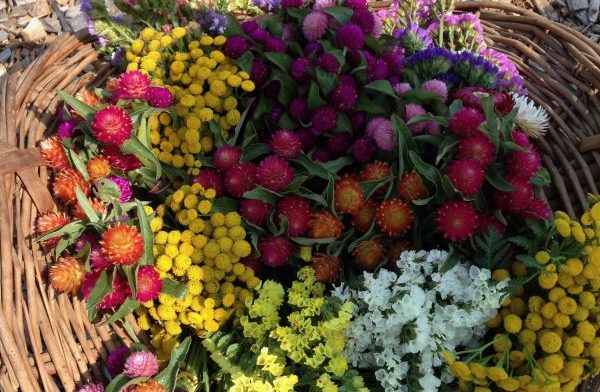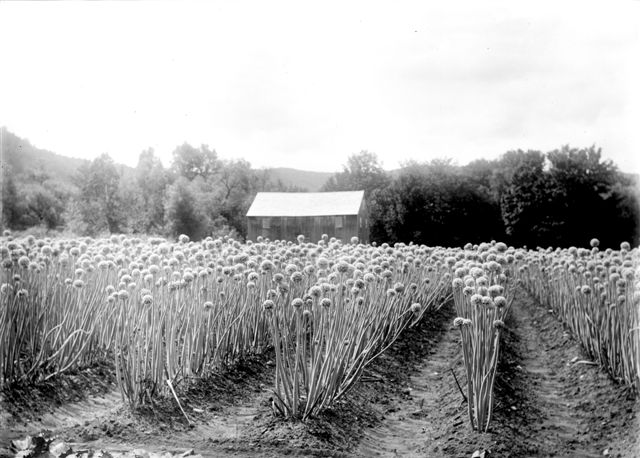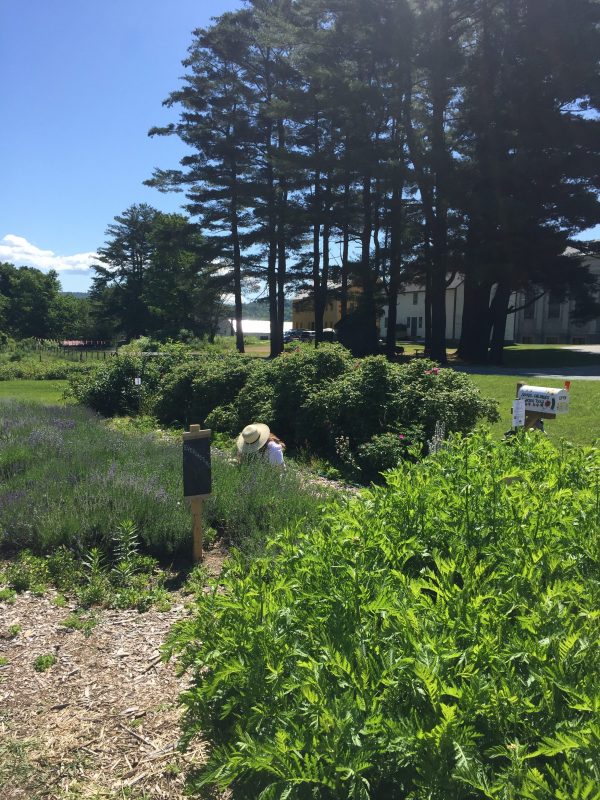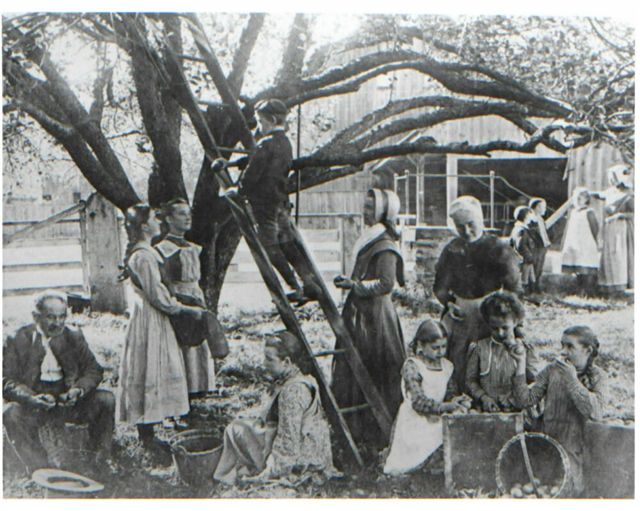Historic Plants and Our Garden
Many of the Museum Garden’s herbs are today used for a variety of purposes. How did the Enfield Shakers use the herbs they grew and that we now grow? Read on for the herbs, flowers, vegetables, and fruits Shakers raised and used to season their foods, scent the air, soothe bodily aches and disease, and color textiles and clothing.
Culinary
Summer savory, sage, sweet marjoram, and thyme were the four main culinary herbs used by the Shakers. Parsley was also used during the summer. Sage was sold as seed and also in dried leaf form. In the kitchen, it was mixed into sausages and stuffing as the essential oil in the leaf helps to emulsify fat. Chives, garlic, tarragon, and parsley were added to salads, soups, and stews. Dill seed and weed were both used to flavor recipes.
Dye
Dying was one of the occupations of the Shaker sisters. They bleached and dyed wool, linen, and cotton. Madder yields a red dye, a favorite color with the Shakers. Other common herbs that were used to produce dyes include Hopi Black Dye sunflower, Bull’s Blood beet, and plain leaf parsley. In preparing the fabric, Fuller’s teasel, also known as bottle brush, was used to card wool and flax.
Everlastings
It was the Shaker’s philosophy never to use flowers to adorn their clothing. Instead, flowers were valued for their functional purposes. Lavender, usually in combination with other medicines, was used in the Village’s infirmary. The two cold-hardy varieties grown at the Museum include Hidcote and Munsted. The flowers grown in these beds are mainly for use in the workshops given at the Museum.
Fragrance
Scented geraniums are available in many fragrances. The rose-scented geranium leaf can be used in cooking and in baking, infusing cake batter with a rose taste. Lemon-scented geraniums were floated in water to give it a refreshing scent. The Shakers dried many herbs, such as lemon thyme, lemon verbena, roses, and lavender, to make potpourri. Orris root, a fixative and important ingredient in making potpourris, is made from the Florentine iris. Southernwood and costmary are herbs used to prevent moth damage in commonly worn woolen clothing.
Medicinal
The preparation of herbs for medicinal purposes was an important industry for the Enfield Shakers. Valerian root, one of the largest crops grown in Enfield, was processed to produce Brown’s Extract of English Valerian and was said to cure “every disease arising from mental affection and nervous exhaustion.” Monarda (Oswego Tea) was used to prevent upset stomachs. Lemon balm was enlisted to lower fevers. Horehound and elecampane were selected to soothe coughs, colds, and pulmonary problems. Wood betony was used for headaches and nervousness. In the infirmary, the sage leaf was made into a tea for a cough and cold gargle. Medicinal teas were also made from mints, chamomile, and catnip.
Orchards and Production Beds
Throughout this historic site stand apple trees, including a large Golden Russet apple tree on the north side of the Garden. These trees are representative of the hundreds the Shakers utilized both for their own consumption and for sale in the surrounding area. At one time there was an apple drying shed near the Laundry/Dairy where apples were processed and hung to dry to be used throughout the long winter months.
Our large rhubarb patch as well as our raspberry and blueberry rows are small-scale versions of the soft fruit the Shakers grew and turned into jams, jellies, and preserves. The Shakers also had a huge sugar bush where hundreds of pints of maple syrup and maple sugar were produced. Our newest addition to the gardens is a small vineyard where cuttings of grape vines originally developed by the Shakers will be preserved for generations to come.
Roses
Roses were used extensively in many different areas of Shaker life. Petals were used to make rose water, a medicinal tonic and astringent. Rose water was also used in the kitchen for dishes such as apple pie. The Shakers did not pick roses with the stem because only the petals had a functional use. Sisters were in charge of gathering petals just after the morning dew has evaporated. They gathered up sheets full of petals and hung them from the rafters to dry, or immediately added them to a still to produce rose water.
For a list of our current plants, visit us on PlantsMap.com.






